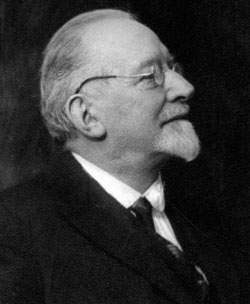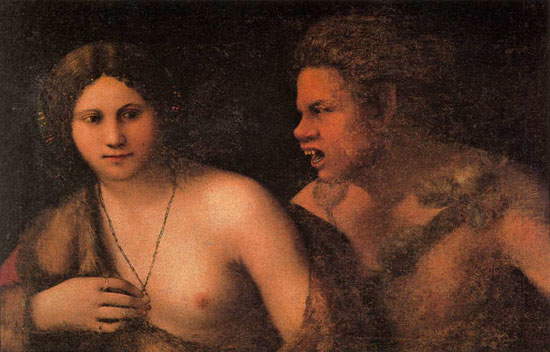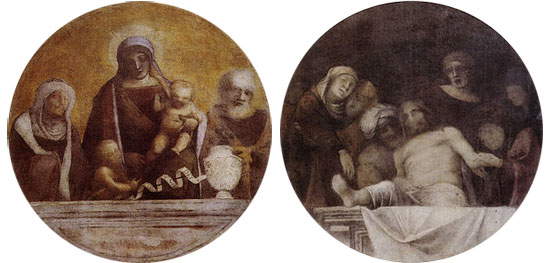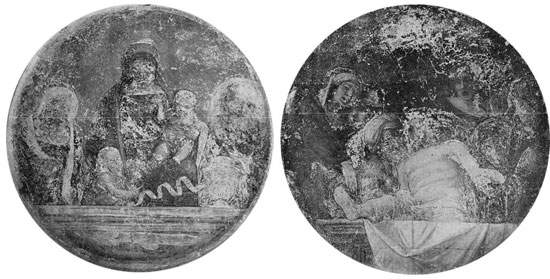In his talk at the conference on the great scholar Adolfo Venturi (Modena, 1856 - Santa Margherita Ligure, 1941), held in 1992, art historian Claudio Strinati recalled how one day Venturi was in Milan visiting the home of Giovanni Morelli, who wanted to show his young colleague his art collection. Strinati recounted how Morelli showed Venturi anAnnunciation (it was actually a Presentation in the Temple), asking him to name the artist who had painted it. Faced with Venturi’s uncertainty, Morelli reportedly responded by teasing him, "But how? It is the work of a Modenese and you don’t recognize it! It is Francesco Bianchi Ferrari." Strinati also recounted how Venturi had tried to redeem himself. He therefore took to analyzing the work in depth, and with an article in which, Strinati said, Venturi destroyed Morelli, he decided to change the attribution of the painting: no longer Francesco Bianchi Ferrari, but a lesser artist, Michele Coltellini. “Certainly one could not confuse the melodious Ferrarese painter with the gnetile master of Correggio,” Venturi wrote. When Morelli, in his will, expressed his wish to leave the works in his collection to theCarrara Academy of Bergamo, he “wrote in his own hand,” next to the subject of the painting, “the name of Michele Coltellini.” And the attribution to Coltellini has remained unchanged to this day.
 |
| Michele Coltellini, Presentation in the Temple (ca. 1500; oil on panel, 82.9 x 60.5 cm; Bergamo, Accademia Carrara) |
The anecdote was taken from Adolfo Venturi’s Autobiographical Memoirs, and it is as interesting as ever, because it gives us a way to shed light on how in those years (we are at the end of the 19th century) the foundations were being laid for the birth of a method destined to radically change the discipline of art history in Italy. In order to refute Morelli’s attribution, Venturi had performed acareful analysis of the painting, coming to the conclusion that certain motifs, such as the bony figures, the elongated hands, the particular shade of red used for the robes, and the ways of tucking in the drapery, were characteristic of Michele Coltellini’s solutions. An attribution formulated, as Venturi himself would have written, “by dint of stylistic findings.” However, it is necessary to point out how, in order to give support to his theses, Venturi had in any case conducted research on historical documentation: this research was fruitless, because the then young scholar had not been able to find any documents on the painting, but it was nevertheless an indication that, with Venturi, the method for advancing hypotheses on attributions was changing in Italy.
 |
| Adolfo Venturi. Photo from Memofonte |
Venturi is credited with having founded a science of the connoisseur that placed the in-depth observation of the original at the center of its method: however, the Emilian connoisseur should not have been refractory to the suggestions coming from the contemporary School of Vienna, which, however, will find a more organic and in-depth application in Pietro Toesca, who will be able to combine the influence of Venturi’s theories with the philological method of the art historians of the Germanic area. Also not insignificant (indeed, fundamental) is the role that Venturi attributed to the journals, considered an important instrument of research, updating and also popularization, as well as of discussion on methods, attributions and issues related to art history. The journals founded by him, or born under his impulse(Archivio storico dell’arte, L’arte, Gallerie nazionali italiane), welcomed important essays by the greatest scholars of the time around works of art, historical documents, even contemporary art. We can say that the art review in Italy was born thanks to the work of Adolfo Venturi: until before, pieces of art criticism were in fact the prerogative of literary journals (and theArchivio storico dell’arte, founded in 1889, was the first scientific art review to arise in Italy).
There are countless attributions that Adolfo Venturi formulated throughout his career, and some of them are still considered valid today by the vast majority of critics: and it must be said that the scholar did not limit himself only to confirming hypotheses already advanced by others, because very often he first proposed the name of an artist who was later recognized by most as the true author of the painting that the Modenese scholar had analyzed. It is worth mentioning some exemplary cases, such as the canvas with Nymph and Satyr preserved in Florence’s Palazzo Pitti, which Venturi first assigned to Dosso Dossi in 1885: the painting, which until then had been recognized as a Giorgionesque work, was traced back to Dosso Dossi on the basis of particular features (the nymph’s facial expression, the conformation of her hand) and general ones (the typically Ferrara manner of coloring), as well as on the basis of a document that, according to the scholar, testified to the presence of the work in the collections of Emperor Rudolph II (although, in reality, it had been in the Uffizi since at least 1675).
 |
| Dosso Dossi, Nymph and Satyr (c. 1508-1520; oil on canvas, 57.8 x 83.2 cm; Florence, Palatine Gallery, Palazzo Pitti) |
Among the singular critical events in which Adolfo Venturi was a protagonist, mention should also be made of the rediscovery of Correggio ’s youthful tondi (of which Venturi was an exalted specialist), which the Emilian painter had painted in the atrium of the Basilica of Sant’Andrea in Mantua and which were first assigned to him in 1612 by a Mantuan historian of the time, Ippolito Donesmondi, author of an Istoria ecclesiastica di Mantova. In the centuries that followed, the Correggio frescoes went through severe deterioration and underwent heavy repainting, so much so that no one gave any more credence to the attribution to Correggio, which, indeed, was practically forgotten. Venturi guessed that the repainting integrated leftovers of the ancient frescoes. At the beginning of the twentieth century, therefore, the later additions were removed, and in the eyes of Venturi, and of the other scholars who had followed the affair, paintings had appeared in a very poor state of preservation, but which nevertheless retained the echo of Correggio’s beginnings, which took place under the sign of Andrea Mantegna’s harsh and robust painting. Needless to point out how Venturi, after the discovery, had conducted a thorough analysis of the works explaining why they could be considered works by Correggio.
 |
| Correggio, Holy Family with St. Elizabeth and St. John and Deposition (c. 1510; detached frescoes, diameter 150 cm; Mantua, Museo Diocesano Francesco Gonzaga) |
 |
| What Correggio’s roundels looked like after the removal of the repainting |
But Adolfo Venturi was not only an eminent art historian and important connoisseur. He was among the first specialists in the field to take an interest in the good practices of heritage protection (even working on the front lines as an official of the Ministry of Education, which at the time was entrusted with the care of heritage), and he was also among the first to recognize heritage as having a central role in culture (and consequently, to recognize the importance of popularization): he was, in short, among those who also began to consider the civic role of art-historical heritage. He was, in essence, a complex figure, impossible to cover in detail in a single article: suffice it for us to know that he still constitutes one of the landmarks not only of art-historical research, but also of the battles in support of heritage.
Reference bibliography
Warning: the translation into English of the original Italian article was created using automatic tools. We undertake to review all articles, but we do not guarantee the total absence of inaccuracies in the translation due to the program. You can find the original by clicking on the ITA button. If you find any mistake,please contact us.